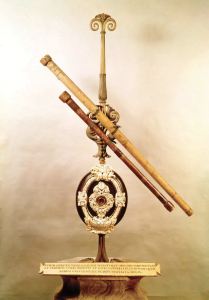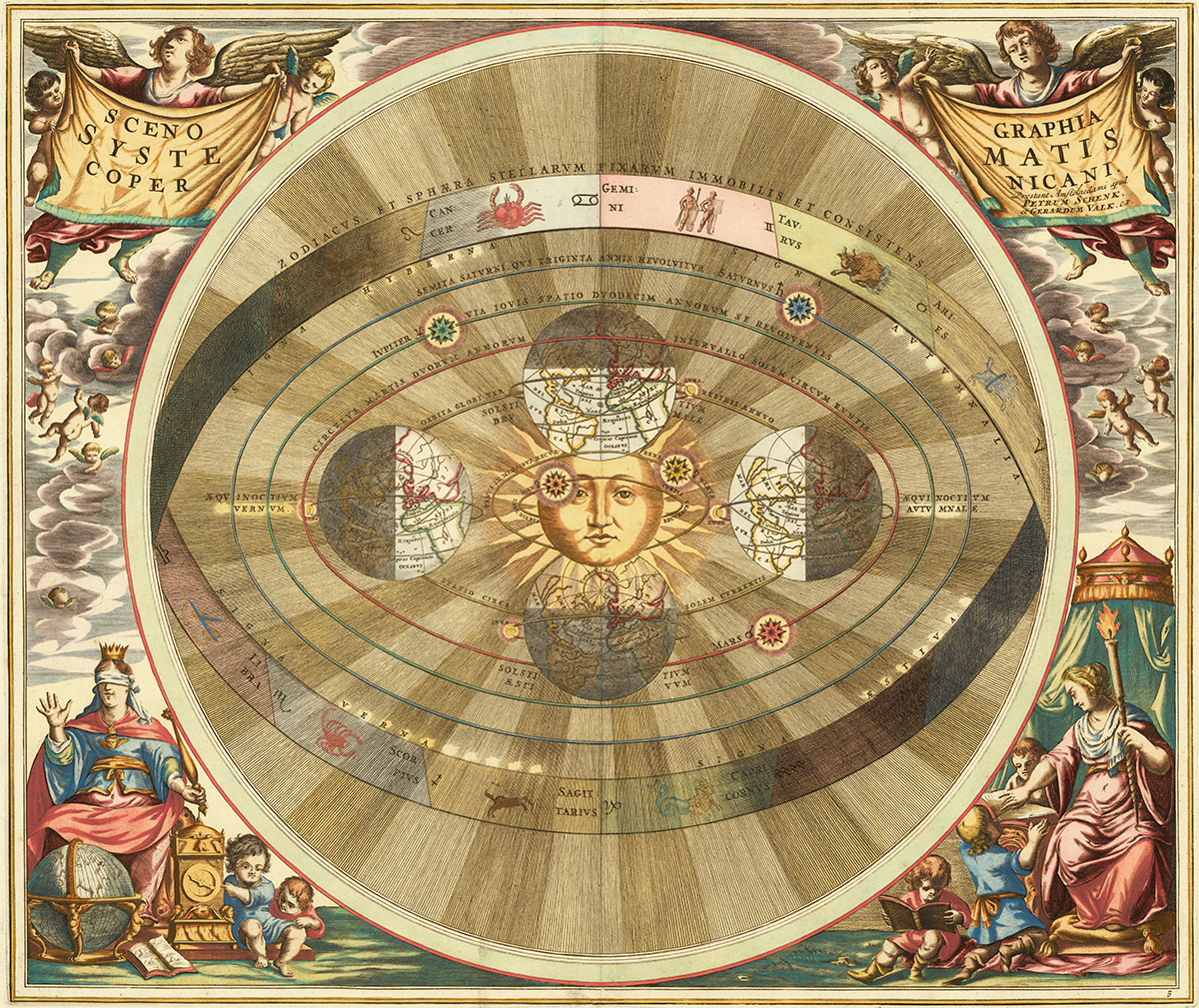Paradigm shifts

The geocentric system was originally proposed by Eudoxus, to be later better represented by the astronomer Claudius Ptolemy (85 AD – 165 AD). The Ptolemaic system placed the Earth at the center of the Universe with the planets and the Sun revolving around it, with the fixed stars in the background. The model was coherent in many ways, but it left the apparent motion of the planets, especially retrograde motion, unexplained. It was not until the Renaissance, in the 15th century, that this conception of the Earth would finally be changed. Nicholas Copernicus established the Heliocentric system in 1543, placing the Sun and not the Earth at the center of the Universe. Later, Johannes Kepler would enunciate the laws of planetary motion, establishing the elliptical orbits of the planets.
Beginning of modern astronomy
Galileo Galilei was born the year of Copernicus' death, and was the most important defender of the Heliocentric theory, a fact that earned him repeated friction with the Catholic Church. He built the first telescope for astronomical use in 1609, managing to study the phases of Venus, the craters of the Moon, sunspots and the 4 largest satellites of Jupiter (today also called Galileans). This last fact would be decisive in definitively ending geocentrism, as well as highlighting that not all objects revolve around the Sun. All these discoveries inevitably led to the birth of modern astronomy, and the progressive disengagement of religious dogmas about the Universe.
The Universe revealed
After Galileo, it was only a matter of time before new astronomers began to make discoveries in an established Solar System and to abandon the models that placed the Sun at the centre of the Universe. Among the most important was Isaac Newton (1643-1727), who enunciated the laws of celestial mechanics, gravity and modified the design of the original telescope (refractor) to make way for a model with mirrors (Newtonian). William Herschel (1738-1822) studied objects other than planets and comets, which he named "nebulae". He also began measuring distances to celestial objects.

The 20th century
One of the most important revelations in astronomy came in 1924, from the hand of astronomer Edwin Hubble: the "nebulae" of yesteryear were actually galaxies, similar to our own, which contained billions of other stars. And it was associated with this discovery that Hubble determined that these galaxies were moving away from us, leading to deduce the expansion of the Universe that would give rise to the Big Bang theory. Albert Einstein enunciated the Theory of Relativity in 1915, which, together with the previous discovery, laid the foundations for modern cosmology and the explanation of various celestial phenomena.
Today and beyond
Astronomy has evolved enormously to this day. Supported by the large and complex instruments that today allow us to scrutinize the sky, added to the exploration of space and the formulation of theories that today seek to understand the fundamental forces that govern the Universe, the history of this science has not been free of complications and stagnations, but in one way or another it has managed to move forward and satisfy human curiosity about the sky, the same that motivated the ancients to observe the stars.


